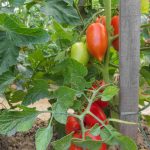Introduction
Before starting a vegetable garden from seeds inside, it is important to take a few things into consideration. First, one should consider the amount of space they have available and how much they are willing to devote to gardening. It will be necessary to plan out the type of vegetables that will be grown as well as potting soil and supplies that are necessary to create the optimal environment for growing them indoors. Additionally, knowing the right timing when temperatures outside permit moving seedlings outdoors can help the transition process go smoothly. Furthermore, selecting high-quality seeds is essential in ensuring optimal plant growth, while using fertilizers or other amendments may also make a difference in accelerating healthy growth. Finally, ensuring proper air circulation and having access to enough light for plants as they grow is another important step before beginning a vegetable garden from seeds inside.
Preparation
Growing vegetables from seeds indoors requires using the right type of containers and potting soil. For beginning growers, the best type of container to use will be a shallow tray or flowerpot. This will help ensure your vegetables can get enough light without taking up too much space. Additionally, when planting in trays, you can make sure each seed has plenty of room to grow without overcrowding other plants. When it comes to potting soil, use a lightweight mix specifically designed for growing indoors. If necessary, supplement this with compost or other organic material. In addition to adequate drainage, a lightweight mix ensures that vegetables will not become rootbound and instead receive ample oxygen in the soil. Keeping plants healthy will require you to monitor temperatures in the room and adjust accordingly.
Planting
When selecting vegetable seeds, it’s important to keep quality in mind. A good starting point is to opt for organic, non-GMO seeds if possible. Look for packets that have a high germination rate and come with instructions on how long the planting timeframe should be. Additionally, research the vegetables you’d like to plant and make sure they’re suitable for indoor growing; some vegetables require more sunlight or space than what’s available indoors.
Once you’ve chosen the right seeds and gathered your supplies such as soil and pots, it’s time to get planting! Start by preparing the soil according to the packaging instructions and fill each container 1/3 of the way up with soil. Create small holes for each seed and drop them in at least 2 cm deep. Cover lightly with more soil then water enough so that top layer is moist; make sure not to overwater as this can cause root rot. Gently pat down surrounding dirt and place them in a sunny spot for best results. Check regularly and ensure your containers stay well watered but not saturated. Once seedlings appear, thin them out so only strongest ones are left in each pot; transplant into separate containers or beds once they reach around 10cms in height..
Caring for Your Garden
Fertilizing your vegetable garden is an important part of the maintenance process. Depending on what types of vegetables you are planting, you may need to fertilize your plants at different stages of their growth. For instance, if you are planting tomatoes, you will need to feed them every 2 weeks with a liquid fertilizer that is specifically meant for tomato plants. Make sure to read the instructions before applying the fertilizer to make sure it’s being used correctly.
To maintain proper temperature conditions for your plants, you will need to pay attention to the temperature in your home or greenhouse. Too much heat can damage some vegetable seeds and cause them not to germinate properly. If possible, try and keep temperatures between 55-80 degrees Fahrenheit for best results. Additionally, light levels for seedlings should be kept bright but indirect by using a grow light setup or placing plants close together near a window that receives ample sunlight throughout the day.
Watering
When it comes to watering a vegetable garden from seeds inside, there are some tips that you should follow. The first thing to do is make sure you have the right materials. Be sure to use a spray bottle or a container that is designed specifically for watering plants. You also want to make sure your container has holes at the bottom, as this will allow excess water to drain away. Additionally, you want to ensure that your watering technique is gentle and even—too much pressure might dislodge any newly-planted seeds and damage little seedlings.
Next, decide on how often you’ll need to water your plants throughout their lifecycle. Generally, newly-planted seeds need watered two or three times per day until they germinate (the time needed may vary depending on the seed type and the current conditions). Once any seedlings begin to sprout, you can drop back down to one or two moderate waters per week. As your vegetables continue their development and move past the growth stages of their life cycle, try not to water them too heavily; focus more on providing consistent amounts of moisture rather than sporadic overly-heavy amounts of water which could become destructive in nature. Finally, as temperatures become warmer and you begin harvesting vegetables from your indoor garden, remember that all plants need plenty of hydration during these months – so try not to let them dry out!
Harvesting
Harvesting vegetables from a vegetable garden is an exciting time for any gardener! There are several key factors to consider when harvesting vegetables from a seed-started garden. It’s important to determine the proper time to harvest each vegetable, as not all vegetables are harvested during the same ripening cycles. Different types of vegetables require different approaches and techniques; some may be harvested continuously with small harvests several times throughout the growing season, while others may call for one large harvest at full maturity.
When picking your produce, it’s best practice to wait until the vegetable has reached its full color, size and flavor before cutting it off the stem or vine. For example in tomatoes, a ripe tomato will have its expected red hue while other quintessential summer veggies like carrots and corn should be picked once they reach their peak delicious sweetness. Other signs of ripeness may vary but generally when it comes to vegetables, you’ll want to pick just before the ripened specimens begin showing minor signs of deterioration such as softness or discoloration.
Once picked ensure that your baskets have plenty of ventilation (holes), only pack what you can bring indoors immediately, and carefully cover over picked plants with mulch or soil to help preserve nutrients in the soil. Enjoy your freshly harvested produce right away as many vegetables don’t age well though some root crops store better than most.
Challenges to Expect
Starting a vegetable garden from seeds inside can be a rewarding and fulfilling project, but it comes with its fair share of challenges.
One of the biggest obstacles to growing successful plants is keeping them healthy and free from disease or pathogens. To do this, you must ensure they are getting the right balance of light, temperature, water, and nutrients. If these environmental requirements are not met adequately, your plants can suffer from deficiencies or become susceptible to a multitude of dangerous microorganisms. To help prevent problems before they start, make sure to only buy quality seeds that come from reputable sources and follow good gardening practices such as regular pruning, thinning, and weeding.
Other issues you may encounter include pests such as aphids, mites, whiteflies, and caterpillars. Try using organic methods like companion planting or natural remedies like neem oil sprays to keep these critters at bay. If your soil becomes infested with nematodes or root knot galls, you might need to resort to chemical treatments for effective pest control.
Last but not least, improper watering techniques can also lead to many problems associated with vegetable gardening from seeds indoors. Overwatering can cause roots to rot while underwatering causes the plant’s growth stunted or inactive due to lack of nutrition intake. Aim for about one inch of water each week and take into account the climate in which you live when deciding how often to water your plants. Some vegetables prefer dryer soil while others like more moisture – pay attention when planting so that your garden has the best chance for success!
Resources
Starting a vegetable garden from seeds inside is a rewarding and fulfilling activity. To begin, you will need to decide if you will be starting your vegetable garden indoors in a pot, planters or growing trays. You’ll also need to make sure that you have the proper supplies needed for starting a successful garden including quality soil, fertilizer, water and sunlight. Once your soil is prepared, it’s time to choose which type of vegetables to plant. Some popular options for indoor vegetable gardening include tomatoes, peppers, lettuce or herbs such as basil or oregano. Choose varieties suitable for containers if you’re planting indoors; look for labels like “patio” or “container” when selecting your plants at the store.
Once you have chosen your seeds and container, its time to sow them. For many types of vegetables please remember to use very warm temperatures 95-100 F (35-37 C)for germination and good light before transplanting outdoors after hardening off. When sowing seeds into the container it’s important not sow deeper then four times their own width to ensure germination; this means very small seeds won’t have to be covered at all while larger seeds should only be lightly dusted with soil on top of them before watering lightly. Furthermore keep an eye out on moisture levels in your potting soil during the germination period because too much water can cause drowning in seedlings but not enough water can lead to poor yield due to lack of growth which too dry soil can cause .
If you want more tips on how to start and maintain a successful vegetable garden from starts inside it’s recommended that you gather resources from specialty books around advanced gardening techniques as well as online resources dedicated specifically towards growing vegetables from seed indoors . If you are new at gardening these kinds of guides may provide invaluable information about how often and how much water is necessary for different types of vegetables along with knowledge about fertilization needs or any pests concerns associated with different species grown indoors.
Conclusion
Once you’ve successfully harvested your freshly grown vegetables, it’s time to celebrate the fruits of all your hard work! Here are a few ideas:
1. Have a garden-themed dinner party: Invite friends over and show off all the delicious food you have been growing. You can even use decorations with produce-themed designs like paper plates or napkins.
2. Donate your produce to a local food bank or soup kitchen: Not only will this provide nutritional meals for those in need, but you’ll feel good contributing to your community.
3. Can or freeze some of your produce: You can preserve the taste of summer for times when fresh fruits and vegetables are out of season. Plus, you’ll be eating healthy year-round!
4. Host a garden exchange: Bring people together who share an interest in gardening and let them trade seeds, plants, tools, and tips as well as pick each other’s brains on how they grow their own vegetable gardens.
5. Start planning out next year’s garden: Use what worked this season and what didn’t so that you can always be one step ahead with your garden designs!

If you’re looking to get into vegetable gardening, or are just looking for some tips on how to make your current garden better, then you’ve come to the right place! My name is Ethel and I have been gardening for years. In this blog, I’m going to share with you some of my best tips on how to create a successful vegetable garden.





